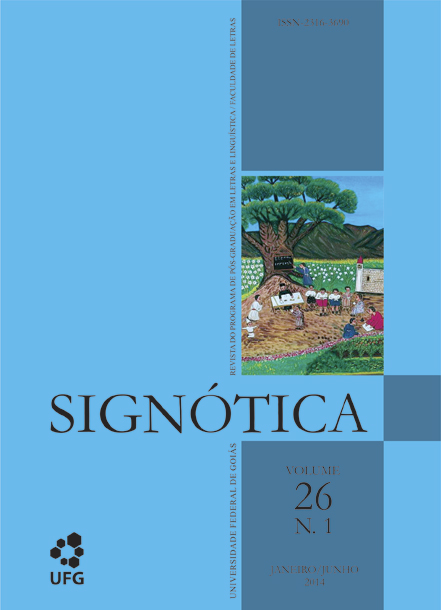Science and racism in literary portraits of Jules Verne
DOI:
https://doi.org/10.5216/sig.v26i1.25213Keywords:
Jules Verne, literary portraits, physiognomony, interdiscourse, racism, habitus.Abstract
It consists in discussing the interdiscursive relationship between literature and science, that is, between the discourses of Lavater and Gall and Jules Verne, taking as a corpus the character portraits of Five weeks in a balloon (1863), Children of Captain Grant (1867) and The Chancellor (1875). Operating in a context of aninter-semiotic parallelism, we use the concept of interdiscourse synthesized by Dominique Maingueneau and Patrick Charaudeau (2002). The interdiscursive relationship presented here is linked to the use and naturalization of scientific speeches intended to apply cultural and historical images of Verne’s characters, which is how the author of Voyages extraordinaire’ legitimized his speech, perpetuating a dominant ethnocentric habitus.Downloads
Download data is not yet available.
Downloads
Published
2014-11-12
How to Cite
SANTOS, Edmar Guirra dos; GARCIA FERREIRA CATHARINA, Pedro Paulo. Science and racism in literary portraits of Jules Verne. Signótica, Goiânia, v. 26, n. 1, p. 217–239, 2014. DOI: 10.5216/sig.v26i1.25213. Disponível em: https://revistas.ufg.br/sig/article/view/25213. Acesso em: 15 dec. 2025.
Issue
Section
Article
License
Copyright (c) 2014 Edmar Guirra dos Santos, Pedro Paulo Garcia Ferreira Catharina

This work is licensed under a Creative Commons Attribution-ShareAlike 4.0 International License.
Author (s) authorize Signótica to publish an article, if accepted, signing its contribution as original and not submitted to another publisher for publication. In case of acceptance and publication, Signótica's articles are Creative Comons BY-NC-ND (Attribution + Non-Commercial + Non-Derivatives)





1.png)





